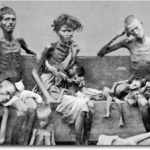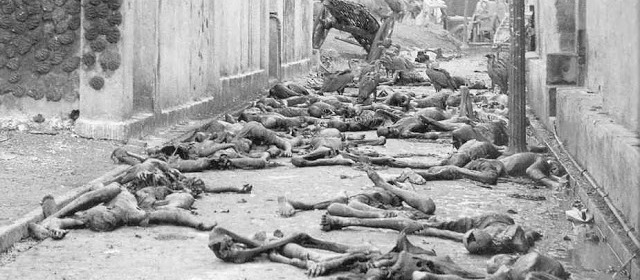 Bengal Famine
Bengal Famine
In India as in Leningrad and Auschwitz and many other locations during the war, starvation claimed millions of victims, turning people into living skeletons before they died.
Starvation, emaciation, racism
According to Lord Cherwell, Britain’s scientific adviser, India – a traditional producer of cereals – was self-sufficient in grains during the war. It wasn’t.
Lord Cherwell’s overly rosy portrayal was just what his friend, Winston Churchill, wanted to hear. “Churchill in particular despised Indians,” notes historian Lizzie Collingham in her Taste of War. Bolstered by Cherwell’s incorrect assessment, the Prime Minister ordered a 60 per cent drop in civilian and military shipping to the subcontinent.

India’s food requirements were also slighted by other government officials who, Collingham notes, “decided that the risk of civilian hunger in India was a lesser evil than jeopardising British civilian food supplies or military supplies for the Indian army.”
The famine (1942-43) was due to a combination of factors: crop failures, catastrophic drop in rice imports from Burma, “disruption of transport because of the primary needs of the war effort, but above all the inability of the government to break down regional barriers to free movement of food and to organize distribution efficiently and fairly.” (Oxford Book of the Second World War)
As in Leningrad, bodies piled up in the streets. “The traditional strategy of selling children for food no longer worked as nobody wanted extra mouths to feed,” says Collingham. Girls were instead sent to entertain wealthy merchants or farmers in exchange for food or money.

“Many died on streets within sight of shops stocked with food.” Lizzie Collingham, Taste of War.
News of the famine did not reach Britain until editor Ian Stephens used his Indian newspaper, The Statesman, to provide enlightenment. Over an eight-week period, he harassed the authorities with “attacks in editorials, letters and using photographs of the dead and dying on the street of Calcutta to publicise the plight of the Bengalis.”
In September 1943, after Field Marshall Archibald Wavell was appointed Viceroy, the authorities finally started to provide food and clothing, and improve transport and other infrastructure.
“At least 1.5 million Bengalis died during 1943-44, when food scarcity was at its height.” As many as five million Indians may have died directly of starvation or indirectly from diseases that ravaged individuals weakened by malnutrition.
Lizzie Collingham, Taste of War (2011)
More information
BBC – How Churchill Starved India